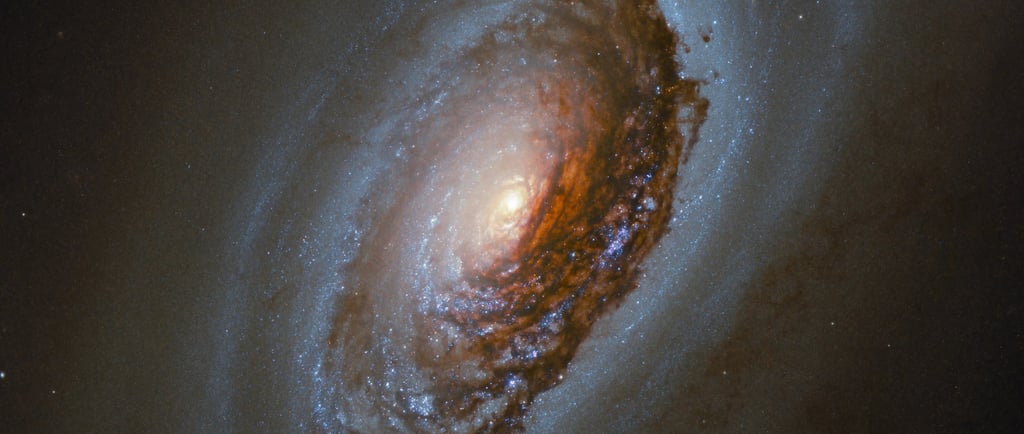NGC 4826: The Black Galaxy


Introduction to the Black Eye Galaxy
The Black Eye Galaxy, also known as NGC 4826, is one of the most captivating celestial objects observed from Earth. Located about 17 million light-years away in the constellation Coma Berenices, this swirling dense galaxy is notable for its striking appearance and intriguing characteristics.
Physical Characteristics of NGC 4826
The Black Eye Galaxy is characterized by its dense structure, enveloped in thick clouds of interstellar dust. These dust clouds obscure the central region of the galaxy, which consists of older yellow stars. As we study NGC 4826, astronomers find that the interplay of dust and light creates an unparalleled spectacle, giving rise to its nickname, the "Black Eye." This dust not only enhances the visual appeal of the galaxy but also plays a significant role in star formation processes.
Astrophysical Significance
NGC 4826 presents fascinating insights into galactic evolution and structure. The swirling nature of the Black Eye Galaxy provides a unique opportunity for astronomers to study how spiral galaxies evolve over billions of years. The existence of the dense dust clouds surrounding the galaxy's nucleus highlights the complex interactions between gas and stars in galactic environments. As we observe the galaxy, we learn more about the formation of stars and the lifecycle of galaxies, contributing valuable knowledge to the field of astrophysics.
In conclusion, the Black Eye Galaxy, NGC 4826, remains a subject of ongoing fascination and research. Its swirling dense structure and thick dust clouds offer a remarkable window into the universe's workings, helping us unravel the mysteries of cosmic evolution. As technology advances and observational techniques improve, we can only anticipate what further discoveries the Black Eye Galaxy may reveal about the vast universe we inhabit.
